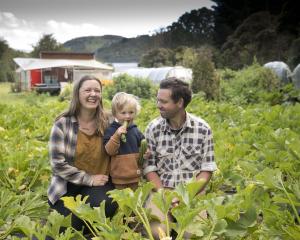As the annual yellow-eyed penguin breeding season comes to a close, Department of Conservation and Yellow-eyed Penguin Trust staff say breeding results in the South remain low.
Doc and the trust estimated there were 250 breeding pairs of yellow-eyed penguins along the Otago and Southland coastline this season.
The estimate was similar to the past two seasons, but considerably lower than historical counts, when there were between 400 and 600 breeding pairs along the coastline.
Monitoring by the organisations identified some regular issues, such as avian diphtheria in chicks and predation injuries at sea, which was affecting numbers of the nationally endangered species.
Doc Coastal Otago operations manager Annie Wallace said there had been some unexplained adult penguin deaths in past seasons.
In a 2013 event, 67 hoiho were found dead, and in 2017, six died — all in similar circumstances. Two more adult hoiho were found dead on Otago beaches in the past week, she said.
Investigations into the deaths indicated signs and symptoms which were consistent with previous events.
"Despite much research into the reasons for these deaths, and the ruling out of many possibilities, the exact cause has not yet been identified.
"We need to take into account similar events in previous years occurring in the same months."
Yellow-eyed Penguin Trust science adviser Trudi Webster said following the past breeding season, the trust created an operational plan for any recurrence of unexplained adult deaths.
"We are collecting as much information as possible to assist those who are working with us to identify the reasons for the deaths.
"This includes sending fresh samples to Wildbase at Massey University for analysis."
She said when a dead adult could be identified and located to an active nest, the chicks would be transferred to a rehabilitation centre in Otago (Penguin Place or Penguin Rescue).
"Here they will receive supplementary feeding and care so that they are in optimum condition for when they fledge, from mid-February."
Ms Wallace encouraged the public to help protect the penguins, particularly through their vulnerable moulting season (from the end of February until mid-April), by keeping dogs under control and giving the birds plenty of space.
"As part of the monitoring, we are also on the lookout for any underweight adult birds so that, where necessary, we can take them into rehabilitation for supplementary feeding before they enter their annual moult."
• Doc hotline 0800 362-468.












